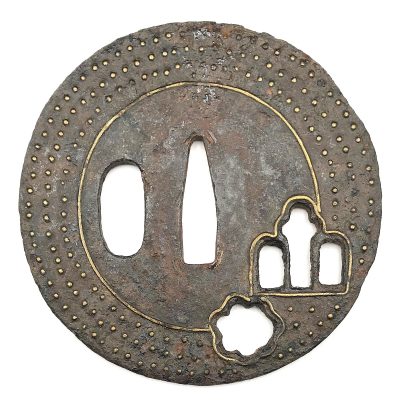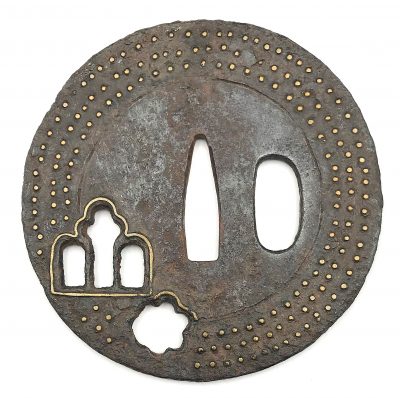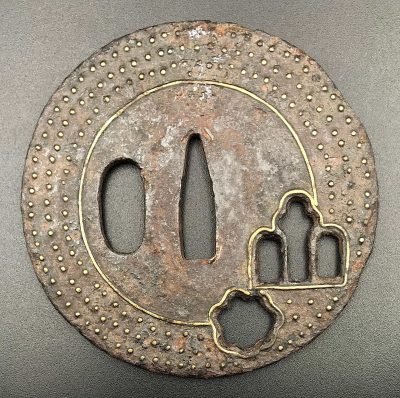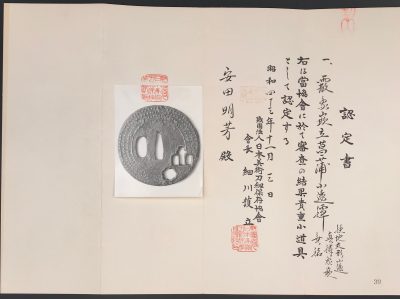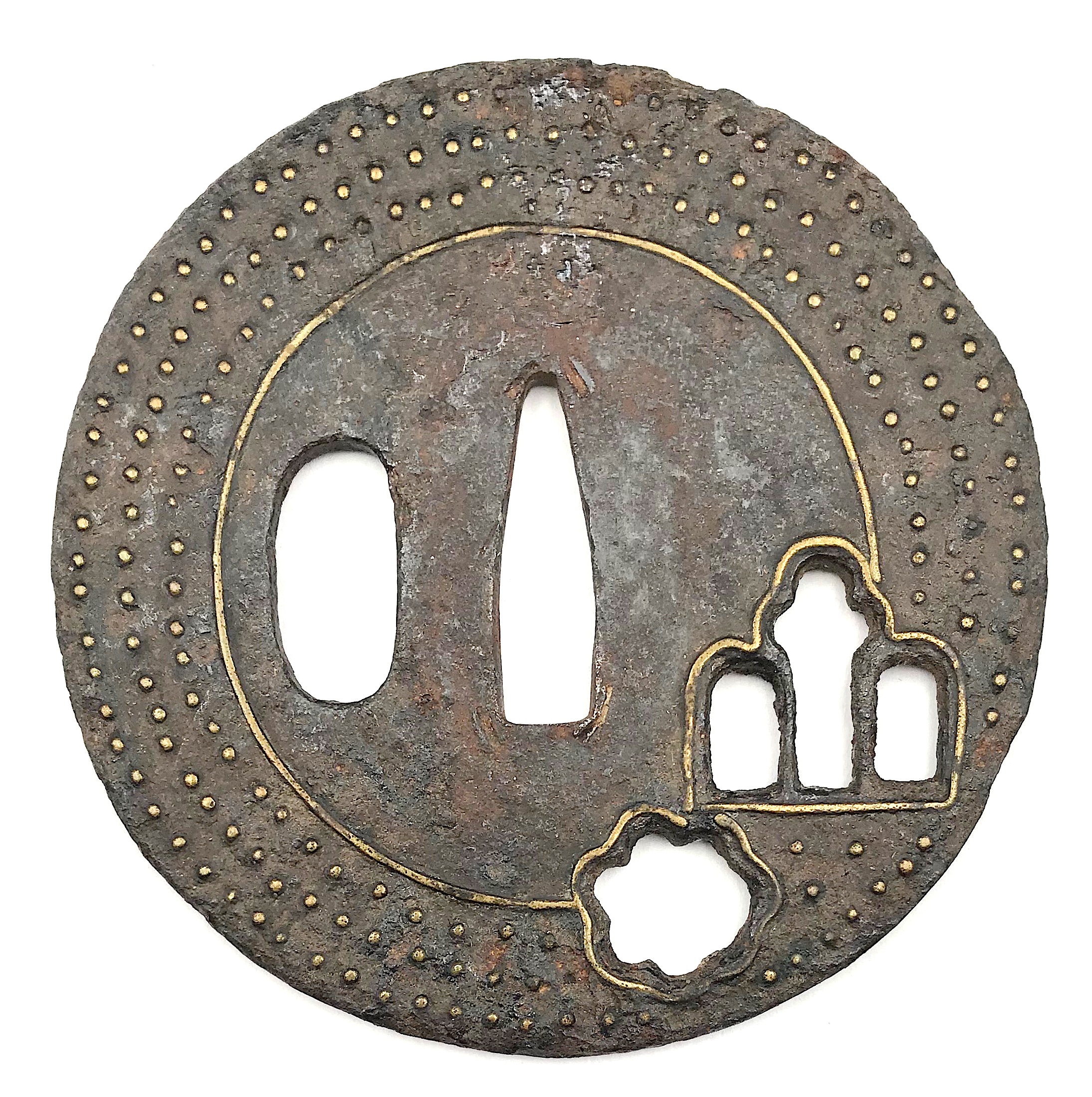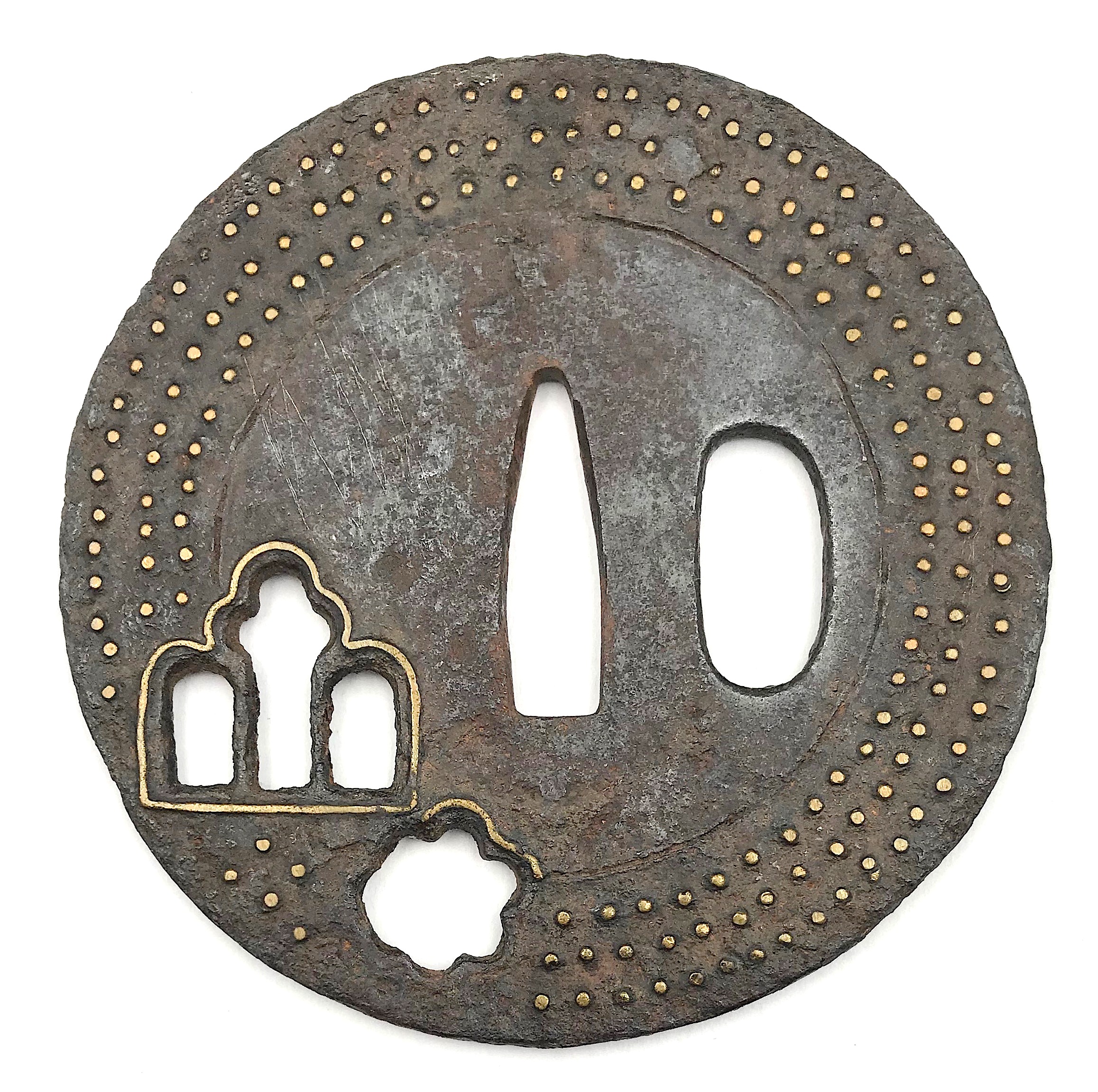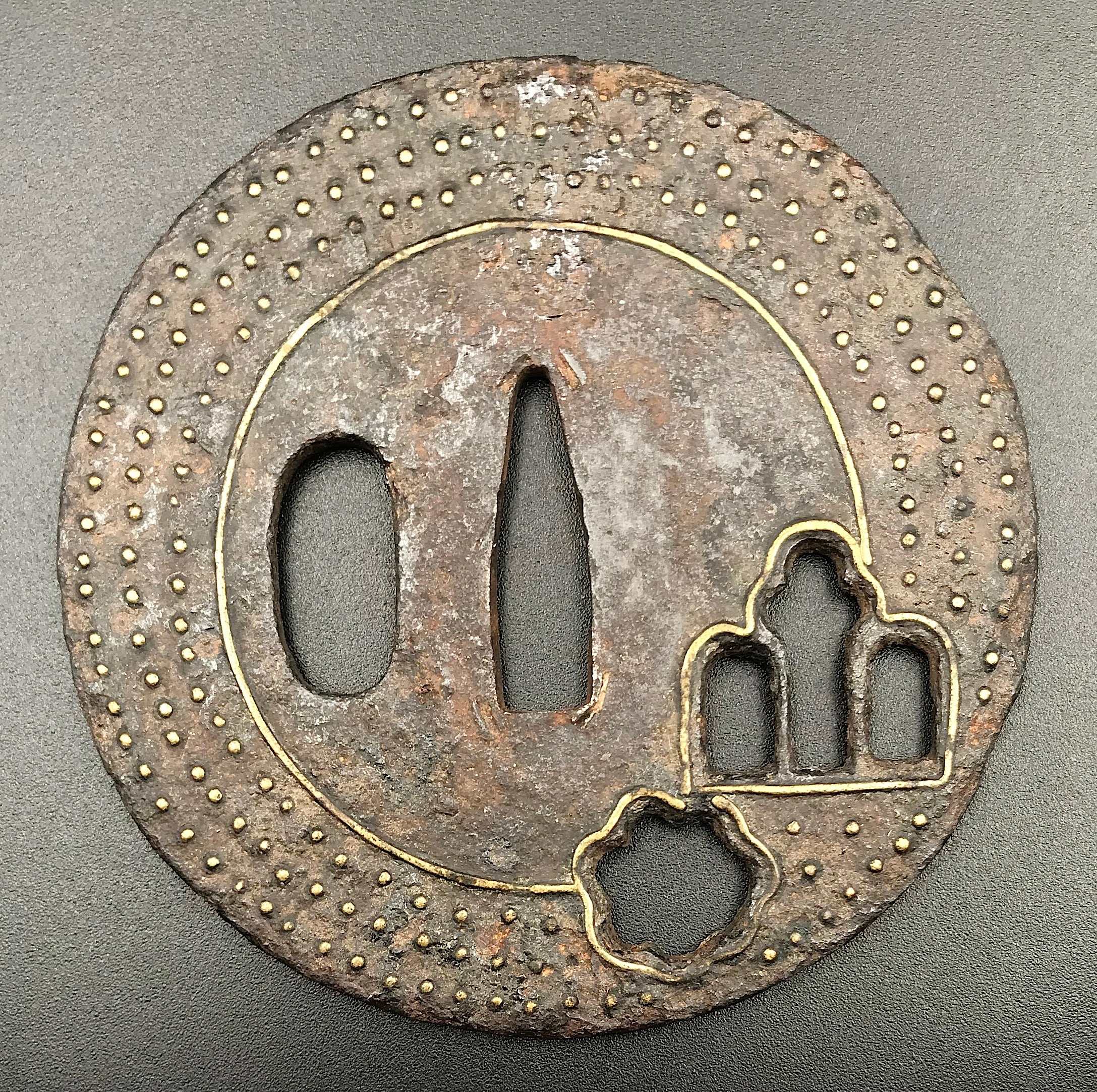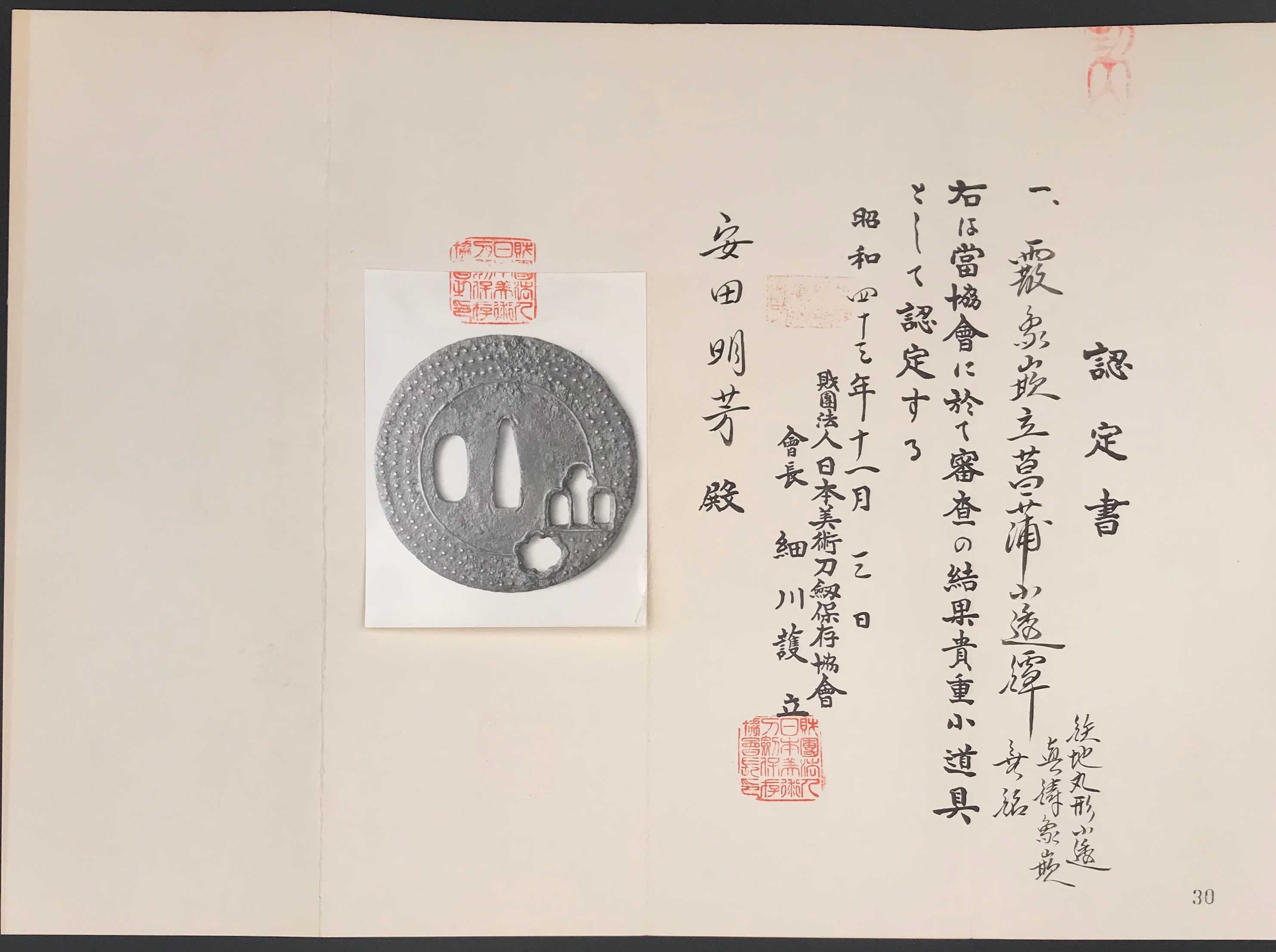Iron tsuba of round form with design of iris and snowflake in openwork (ko-sukashi or small cut-outs) outlined with brass wire. Three concentric rows of brass dots (ten-zōgan), with a brass circular line inside the innermost row of dots (missing on the back). Hitsu-ana is not outlined with brass wire, which let us suppose that it was cut out at a later date.
Iron and brass. Ko-sukashi and ten-zōgan technique. Mid Muromachi period (1454-1513).
Height: 74.0 mm, Width: 73.6 mm, Thickness: 3.0 mm.
NBTHK certification of 1968: “Kicho”. Condition is relatively poor: rust, missing inlay, scratches.
While representation of the snowflake is rather standard, the meaning of the other cut-out design was initially less clear. Similar symbol was found at (1) “Kokusai Tosogu Kai, International Convention & Exhibition, September 24-25, 2005, The Frazier Historical Arms Museum, Louisville, Kentucky, USA”; on page 21 there is a photograph J-6 of a ko-tosho tsuba with “iris theme openwork”; (2) Japanese Swords and Tsuba from the Professor A. Z. Freeman and the Phyllis Sharpe Memorial collections. Sotheby’s, London, Thursday 10 April 1997; page 11, lot 6 – a ko-katchushi tsuba of early Muromachi period fith “simple design of stylized iris”. In both sources the symbol is explained as ‘iris” (kakitsubata).

Freeman and Sharpe collections. Sotheby’s, 1997.

Kokusai Tosogu Kai, September 24-25, 2005.


